
Taking the Toll, a 2 metre high sculpture by Jon Buck, part of an exhibition in Clearwell Caves, Gloucestershire
7th June until 31st August 2025

Taking the Toll, a 2 metre high sculpture by Jon Buck, part of an exhibition in Clearwell Caves, Gloucestershire
7th June until 31st August 2025
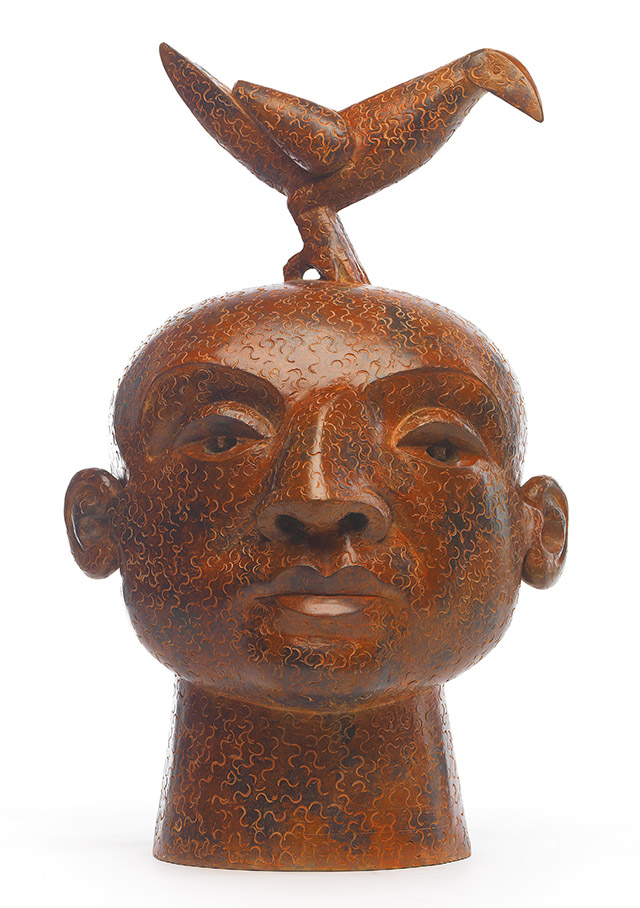
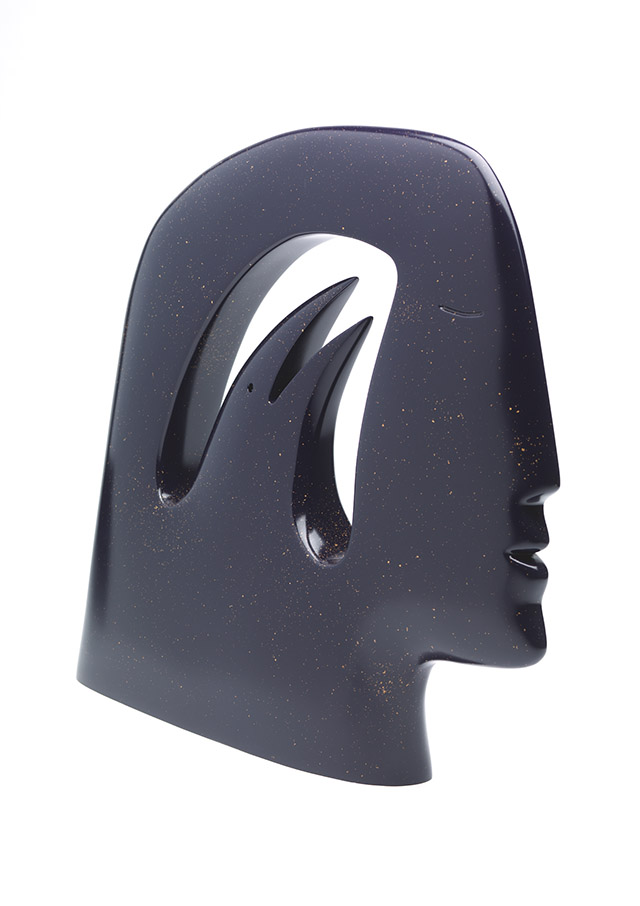
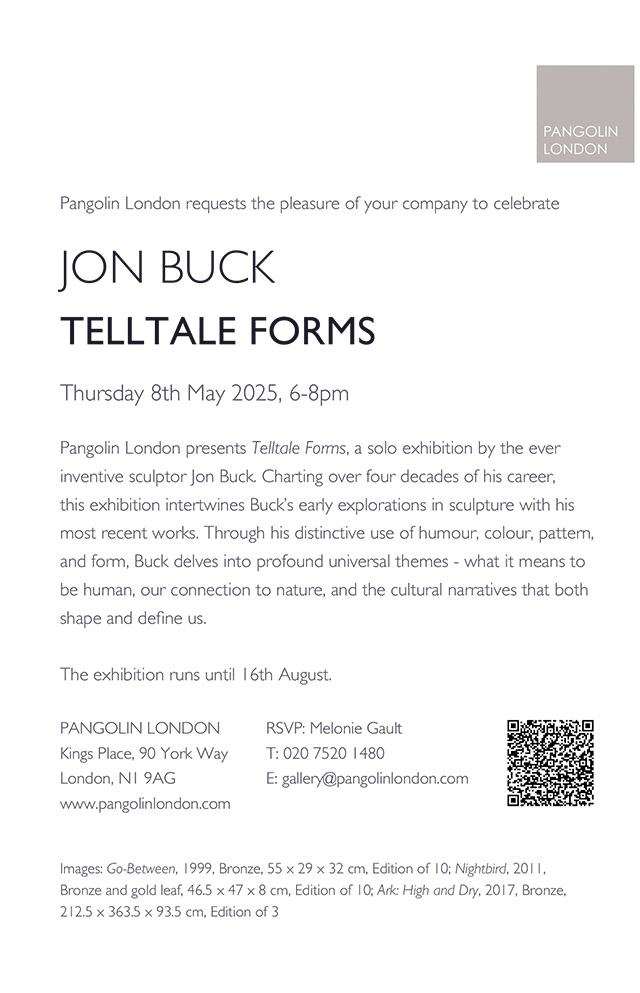
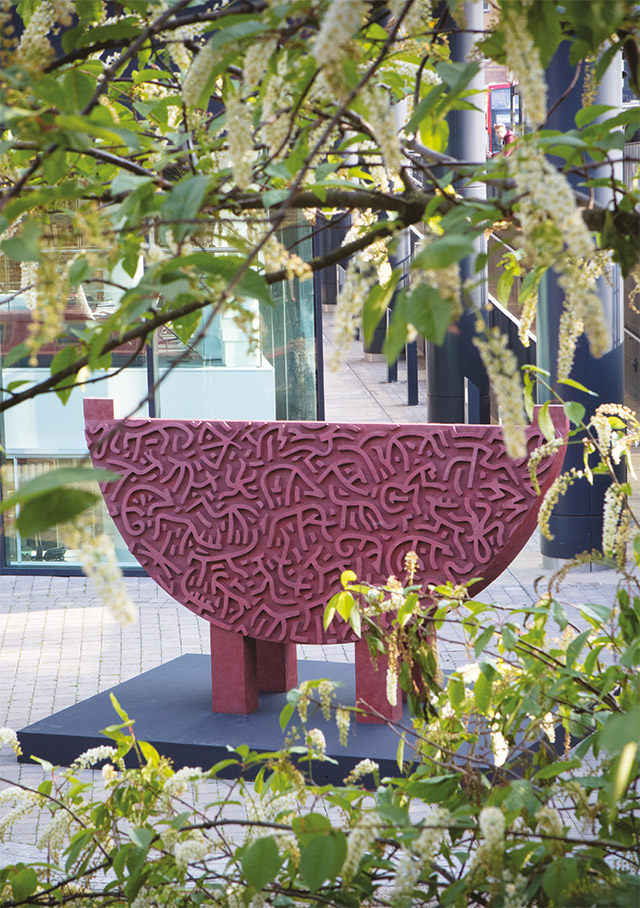
“Pangolin London presents Telltale Forms, a solo exhibition by the ever inventive sculptor Jon Buck. Charting over four decades of his career, this exhibition intertwines Buck’s early explorations in sculpture with his most recent works. Through his distinctive use of humour, colour, pattern, and form, Buck delves into profound universal themes – what it means to be human, our connection to nature, and the cultural narratives that both shape and define us.”
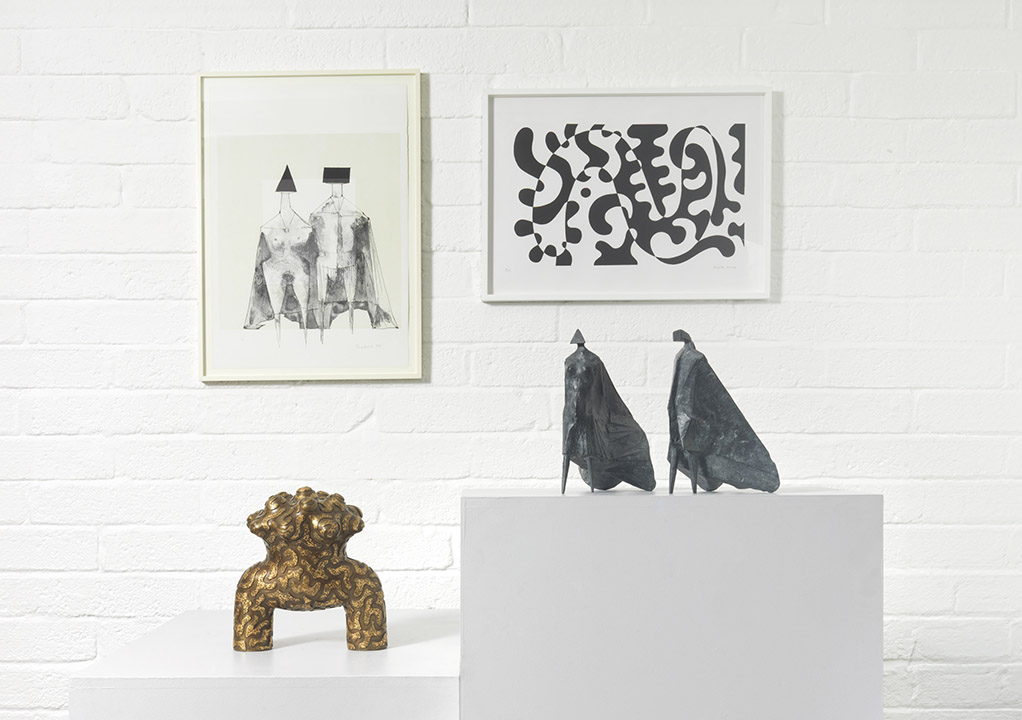
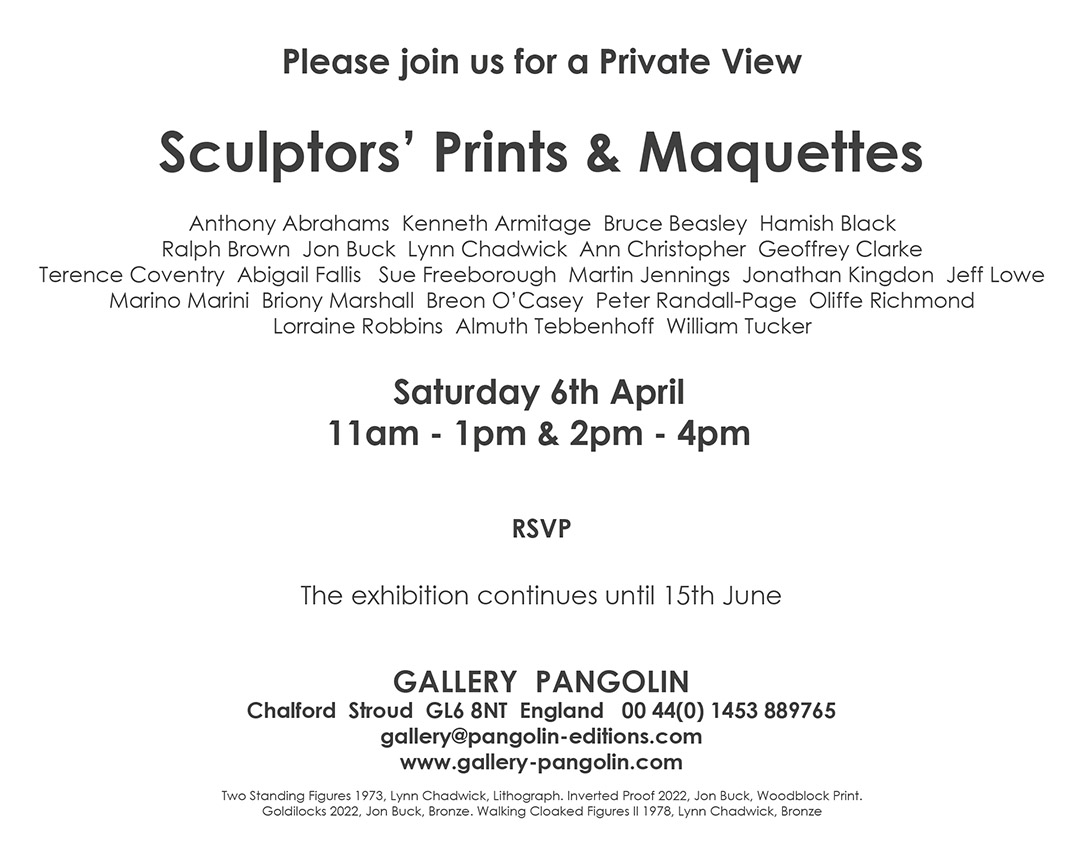
“Artists have always been inspired to depict the great creation stories of their day attempting to explain our existence and make conjectures of what the future might hold. My images are in essence no different but also draw inspiration from Science’s contemporary narrative of Evolution as well as our shared history”
Jon Buck
“In Patterns of Change Buck presents us with a multi-layed experience, both visual and though provoiking with celebrates the diversity of life but also cvarries a pertinent message for our generation living in the Anthropocene era to respect ‘the delicate balance that is the web of life’.”
Polly Beilecka
Pangolin London
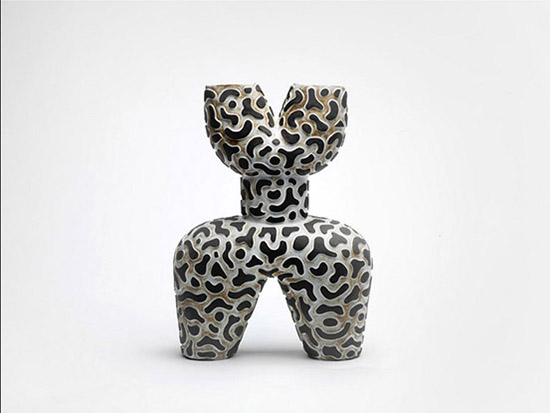
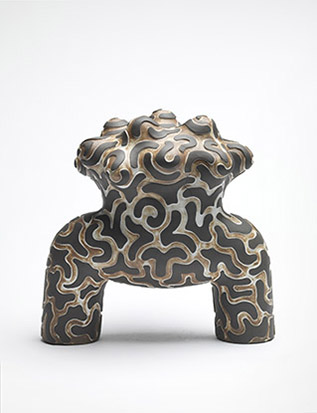
I have been invited to show five ceramic pieces in this new exhibition, along with a small group of other sculptors who also use fired clay as part of their practice.
In an area termed Old Europe, archaeologists have excavated many small female figurines dating back to the Neolithic period of Prehistory. These little sculptures have been interpreted as ‘Earth Goddesses’ suggesting belief in a divinity who gave birth to and presided over a Nature that was both revered and sacred.
Today, our understanding of how life emerged and evolved is of course very different. However, science still uses figurative metaphors to help explain and discuss how evolution functions, an example of which is the ‘Red Queen’ borrowed from Lewis Carroll’s stories of Alice.
In imagining what a Red Queen of evolution might look like, I made a number of small figurative sculptures and was then struck by how little difference there was in essence between the Red Queen and a Neolithic Goddess. In consequence, these ceramic figures are imagined deities of evolution. Like Life itself, the surface patterns are cellular, making up the emerging forms that might develop into the biodiversity of the living world.
Although science has given us an understanding of the biological processes of life, we seem unable to hold it sacred as our early ancestors once did, the result being the impending ecological crises that confront us today.
RWA Royal West of England Academy, Queens Road, Clifton,Bristol
26 March – 12 May 2024
DREAMING IN FIRE

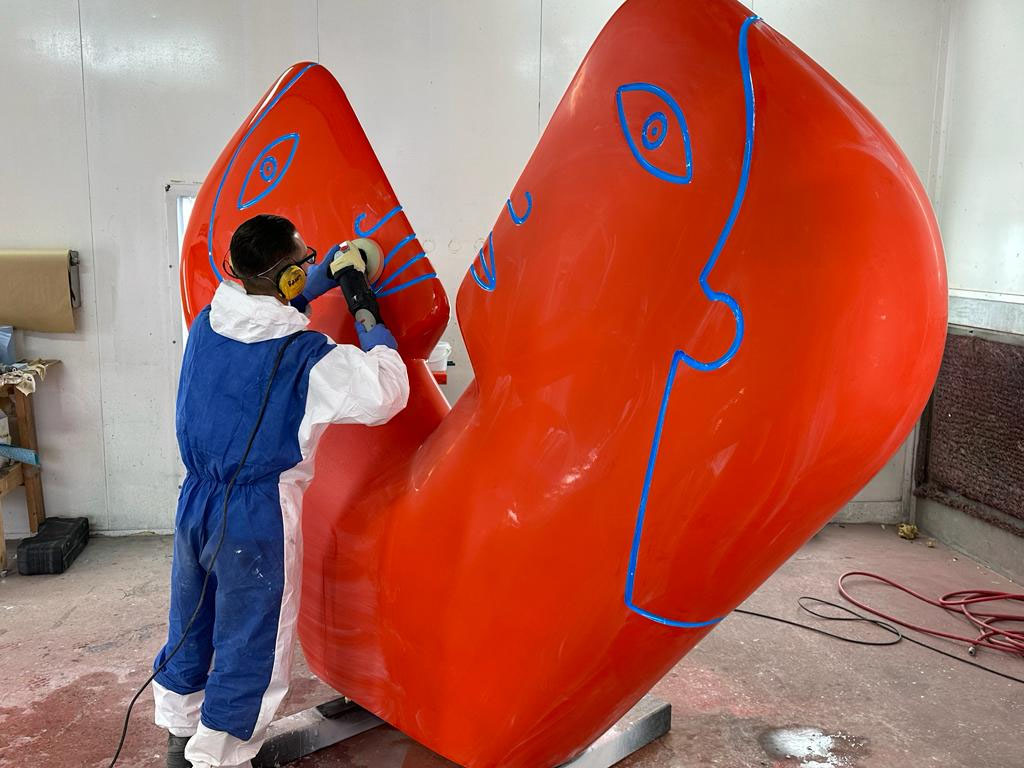
These two bronzes, ‘You and Me’ and ‘In Man’s Nature’ have been over a year in production at Pangolin Bronze foundry in Gloucestershire and are now in the final stages of being finished, ready to be shipped to South Korea where they will be installed in the Bundang Memorial Park in Seoul.

The Ruwenzori Sculpture Foundation was set up in 2004 with the intention of fostering cultural exchanges between Ugandan and British artists. In early 2005 three Ugandan trainees, selected for a three-year scholarship, arrived in the UK to be trained in all aspects of the bronze-casting process. They returned to Uganda to set up Rwenzori Founders Sculpture Foundry in 2008, adapting their knowledge to local conditions and the needs of local and visiting artists. That same year, I was asked to design a set of tribal clan totems for the Founders team to cast, exhibit and sell in their on-site gallery.
Initially I spent time at Makerere University in Kampala researching the customs of Uganda’s tribal clans and their totemic animal emblems. Although these customs are still very much adhered to, any visual evidence of what form these totems might have taken no longer exists. To some degree that gave me licence to invent new sculptural forms to represent each clan. As the nature of the totems was intended to be symbolic, my designs had to be stylistic representations rather than naturalistic ones. Having completed my research, I eventually designed and supervised the making of over thirty different animal totems, many of which represented clans from the largest tribe in Uganda, the Buganda, but were also common to several different tribal groups.
In the intervening years the team of founders at Kyemihoko have cast many editions of these small bronze totems which are always on show for visitors to their award-winning art gallery. I have returned on several occasions to add to the collection and also to make larger works to be sited in the developing sculpture park. On my last visit in 2018, I was invited to help enlarge the Ngo, or Leopard totem, to add to the growing collection of outdoor works by both Ugandan and British artists. This large bronze has finally been completed and has been installed in the park by the Rwenzori Founders team this summer.
Related links:
www.ruwenzorisculpture.com
www.rwenzorifounders.com
1st May –8thJune at Pangolin London
13thMay-28th June at Gallery Pangolin, Stroud
“Jon Buck’s work takes inspiration from a wide range of historical and contemporary scientific and anthropological sources. In this important exhibition across both Pangolin Galleries many of his new works explore primary patterns derived from the natural world. They embellish the surfaces of containers, receptacles and arks with the implied need for the preservation of the great diversity that is life.”
Pangolin London
Humans have been inspired by and admired the aesthetic forms of the natural world ever since Neolithic artists scraped the first images on rock faces and cave interiors. Their symbolic and metaphoric depictions continue to delight us and be part of our conceptual toolkit even today. However, in a day-to-day sense we have become more reliant on the use of a much more abstract set of symbols, not least with alphabets of written languages, but more recently with the icon vectors found on computer keyboards and mobile phones which have become globally ubiquitous. In my sculpture ‘In Ferment’ above, the two languages are tumbled together on the surface of this vessel. It is as if one is being asked to imagine a metabolic process of fermentation with our new and ancient cultures both effervescing within its interior.